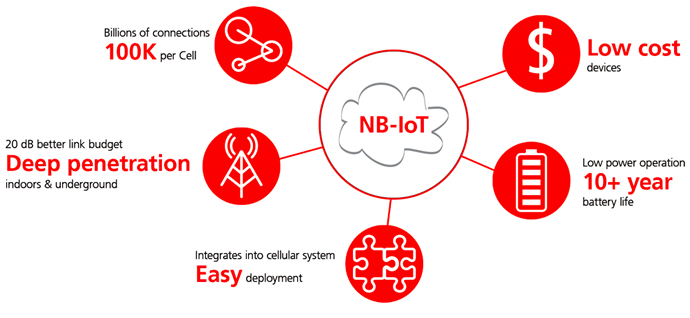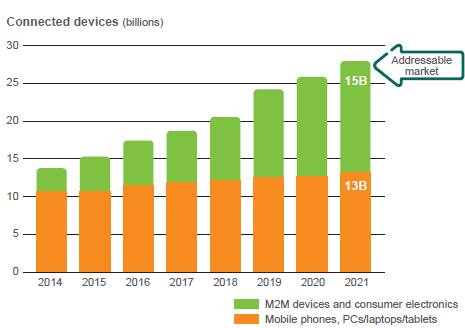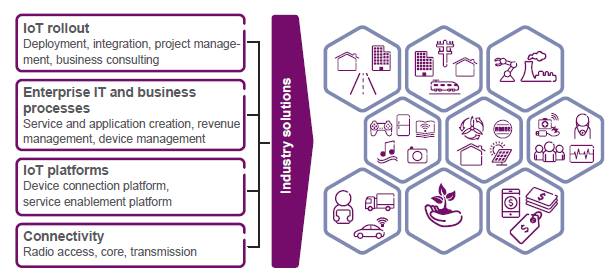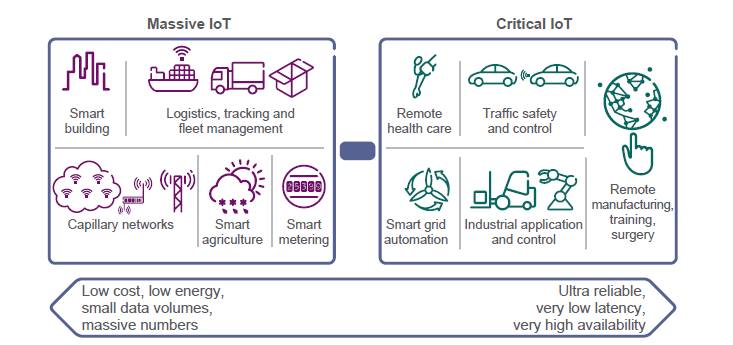There is a lot of excitement and buzz about the Internet of Things (IoT) — particularly the economical and societal benefits that will emerge as we connect everyone and everything around us.
Cellular technologies, like 4G LTE, are playing an increasingly important role in delivering reliable, secure, interoperable communications with ubiquitous coverage for applications such as smart cities, connected industrial, mobile health, and much more. Meeting the wide variation of requirements across these IoT applications requires new technology innovations. And earlier this month, the cellular ecosystem took an important step in this direction.
In the future, all devices that benefit from an internet connection will be connected. In this Networked Society, every person and every industry will be empowered to reach their full potential. Internet of Things (IoT) technology is a key enabler of this vision by delivering machine-to-machine (M2M) and machine-to-person communications on a massive scale. based on study there will be around 28 billion connected devices by 2021, of which more than 15 billion will be connected M2M and consumer-electronics devices . A largeshare of these will be applications served by short-range radio technologies such as Wi-Fi and Bluetooth, while a significantproportion will be enabled by wide area networks (WANs) that are primarily facilitated by cellular networks.
NB -IOT (Narrowband-IoT), a new LTE-based narrowband technology optimized for IoT. This new technology, along with the previously completed eMTC (enhanced Machine-Type-Communications) technology, are part of Release 13 of the global 3GPP standard. Together, they deliver enhancements in both the LTE air interface and network that will bring new levels of efficiency for low-throughput, delay-tolerant communications common in many IoT use cases. They also introduce two new LTE IoT device categories (Cat-M1 and Cat-NB1) that are part of a unified, scalable LTE IoT platform.

Scalable LTE IoT Platform
NB-IoT and eMTC bring many enhancements and optimizations to LTE that will reduce IoT device complexity, enable multi-year battery life, and provide deeper coverage to reach challenging locations such as deep inside buildings. The new technologies also can leverage existing LTE infrastructure and spectrum, coexisting with today’s mobile broadband services.
The IoT revolution offers huge potential value in terms of improved efficiency, sustainability and safety for industry and society. Analysts predict that the total added value of the IoT will be USD 1.9 trillion by 2020. The variety of applications and solutions designed for individuals, business and industry is spurring the rapid expansion of the IoT
market. The IoT is playing a major role across a variety of vertical sectors, generating cost savings, new revenue streams and other benefits. Each IoT application needs a clear value proposition and business logic in line with the prevailing ecosystem, business models and value chains of the various stakeholders. For all applications, solutions need to be integrated on platforms that can scale and handle millions of devices efficiently. Business processes for administration, provisioning and charging will have to be streamlined to minimize costs and enhance the business case.
There will be a wide range of IoT use cases in the future, and the market is now expanding toward
both Massive IoT deployment as well as more advanced solutions that may be categorized as
Critical IoT.
At one end of the scale, in Massive IoT applications – typically sensors that report to the cloud
on a regular basis – the end-to-end cost must be low enough for the business case to make
sense. Here, the requirement is for low-cost devices with low energy consumption and good
coverage.
At the other end of the scale, Critical IoT applications will have very high demands for reliability,
availability and low latency. These use cases are enabled by LTE or 5G capabilities. Here, the
volumes are typically much smaller, but the business value is significantly higher.
There are, however, many other use cases between the two extremes, which today rely on 2G,
3G or 4G connectivity.





